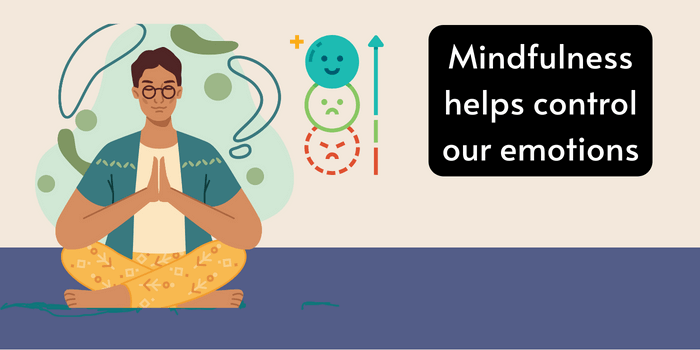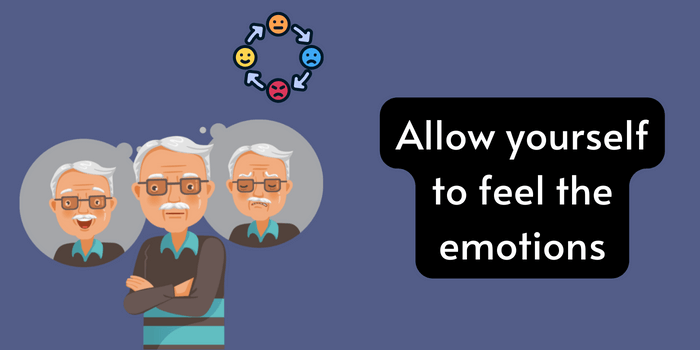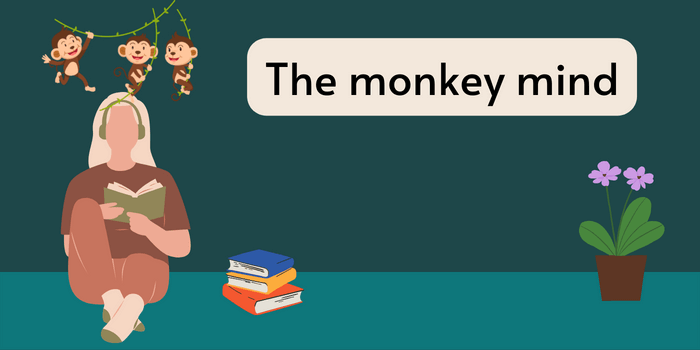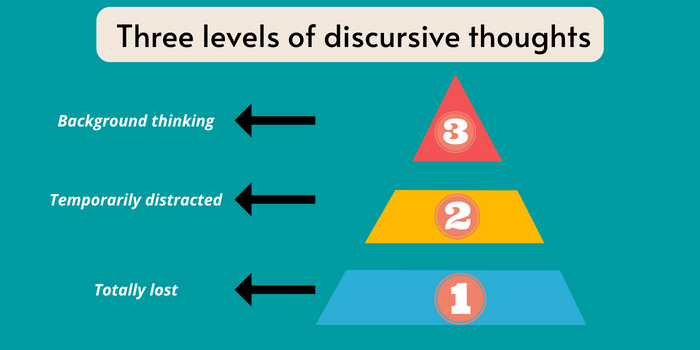At work, imagine your boss walking by without returning your smile. How would you feel?
If you are like most people, you would be obsessing about whether he is unhappy with you.
You start panicking about the one-on-one performance review scheduled later in the day.
Did I bomb? Is that why he did not smile at me? Will I lose my job?
The mind goes out of control and you experience great misery for the next 10 minutes.
Now imagine him walking back. This time he smiles at you, and even stops for a chat.
Phew! You feel relieved and elated.
What was the earlier misery for? Why does your experience of life have to depend so much on external circumstances?
Our experience of life
We experience life as a series of responses to our thoughts and emotions and the various feelings they invoke in us.
Sometimes we’re bored, or we’re happy, or we’re depressed, or we’re in love and lost in a daydream.
These states of mind completely colour our world and our life. We are like driftwood on water, sometimes floating calmly, at other times tossed around by rogue waves.
Meditation is a way to open our mind to this constant rollercoaster ride that we torment ourselves with. It equips us with the tools to step back and experience every moment with a sense of equanimity and stability.
Through meditation we learn to relate to our emotions in a more even-minded way.
Mindfulness helps us control our emotions since it trains us to be aware of our thoughts, feelings, and sensations. We also learn to completely accept whatever arises in our awareness.
Imagine how powerfully this skill can translate into real life. Just because your boss did not smile at you, you would not fly into panic. You would not be helplessly tossed around by external triggers and circumstances you cannot control.
Becoming resilient
Research shows that those who practise mindfulness are better able to to respond to difficult situations without falling into automatic and non-adaptive reactivity. In other words, they are more resilient.
Emotional resilience is what allows us to successfully navigate the rough waters of life, without constantly fearing that we will go under.
There are two important skills we need to build for emotional resilience
- The ability to name the emotion you’re experiencing
- The ability to describe what you’re feeling
Psychiatrist Dan Siegel calls it “Name It to Tame It” and he explains that the brain releases soothing neurotransmitters as we identify and name our emotions.
Meditation helps us build both these skills – identifying and deeply understanding emotions and feelings.

Become A Morning Person Bootcamp
For calm mornings with a daily meditation & journaling routine
Limbic system vs cerebral cortex
When we are caught up in the throes of our feelings, our limbic system is in control.
The limbic system is an older part of our brain which is involved with base emotions like fear, anger, anxiety, arousal, longing etc. Its primary function is to just make us feel, so we may take necessary actions to stay alive – like eating food, running away from a lion etc.
When we name the emotion, we’re engaging the cerebral cortex or the thinking brain which is the most recently evolved part of the brain, and is involved with impulse control, long term planning and emotional control.
Emotions are messengers
As an emotion arises, we must have the openness to fully accept and experience it, even when it is a negative emotion like anger.
Emotions are messengers, trying to tell us something important. If you suppress strong emotions, you may postpone it for some time. But it will always return, bearing the message again and again, till you stop and listen, and really hear it.
This is where meditation helps. It trains you in observing, identifying, and skillfully responding instead of getting automatically caught up in reactivity.
For example, the anger you feel may be trying to tell you that the expectation you have about a situation is no longer working for you. You need to either change your expectation or move away from the situation.
Meditation also helps us to observe the emotion neutrally. It gives us the mental distance to simply allow the emotion to rise without being caught up in its story with our heart pounding, and the nervous system pumped up with neurotransmitters that prepare us to fight, flee, or freeze.
We learn to not waste our energies in overreacting, and instead devote our mental bandwidth to other important matters that are more positive for our life.
Thinking and the monkey mind
Many beginner meditators have this very common misconception that meditation is about making the mind go blank, with no thoughts.
But is that possible or even desirable?
The nature of the mind is to think, and think it will.
In the Buddhist tradition, the human mind is often referred to as the monkey mind. Like a troop of drunken monkeys screeching and jumping from tree to tree, our minds are filled with thoughts and ideas and worries.
We meditate not to get rid of thoughts, but to reclaim the natural capacity of the mind to stay connected to the present. The way to do that is by training the mind to stay on an object or an experience.
This is not to say that mind wandering is all bad or that you should always be in a state of intense focus. Not at all.
Mind wandering has its uses. Research shows that positive intentional mind wandering is associated with creativity. But most of us are prone to unintentional mind wandering which is related to self-doubting, negative rumination etc.
The benefits of mind wandering is a whole other topic to get into, but suffice to say that uncontrolled mind wandering is not great for us, and a metacognitive skill like meditation can bring about a balance between being connected to the present moment and wandering away on the wings of a random thought.
Three levels of thought
In her book, How to Meditate, Pema Chodron talks about 3 levels of discursive thoughts that we have.
Level 1
At this level, we’re completely lost in our thoughts. We’re in the realm of fantasy or daydreaming. When we come back, we realize that we were totally gone somewhere else.
When this happens while meditating, it can be a frustrating experience and our reaction tends to be harsh – that we allowed ourselves to get so completely carried away.
Level 2
Here, you are not completely lost to the fantasy, but you’re distracted for a few moments by something.
Perhaps you hear a car alarm going off outside and you wonder whose car it is and what happened. Maybe you felt a pang of hunger.
Whatever it is, you’re distracted and lost for a few moments, but you come back to the meditation quickly.
Level 3
This category of thinking happens almost in the background. As you’re meditating on the breath, you’re aware of some in-and-out thoughts happening. It doesn’t throw you off because it happens in the background.
You experience the thoughts arising and even bear witness to it, but it doesn’t carry you off into some faraway destination.
Dealing with thoughts
The instruction to dealing with all 3 levels of thoughts is the same – remember to treat them with gentleness, patience, and humour.
Have gentleness for yourself about the fact that it is not possible or desirable to completely avoid thoughts, that you will get distracted, and that you cannot control how long you will be distracted for.
Be patient with yourself to bring the quality of relaxedness into your practice and your life. Meditation is not a linear process. You may begin to feel that you’re getting the hang of this meditation thing, and the next session may feel like a complete rollercoaster ride. In that sense, our discursive thoughts keep us humble and in balance.
Lastly, have a sense of humour. Somewhere along the way you will come to the realization that your mind is like a wild monkey in a madhouse – it has always been that way. Accept this with a sense of humour and gentleness.
Our thoughts are like guests passing through the door of a hotel. The doorman does not follow the guests into the bathroom. The doorman just opens the door, and closes the door.
It’s the same way with thoughts. They will come and they will go. You don’t have to follow each one.




